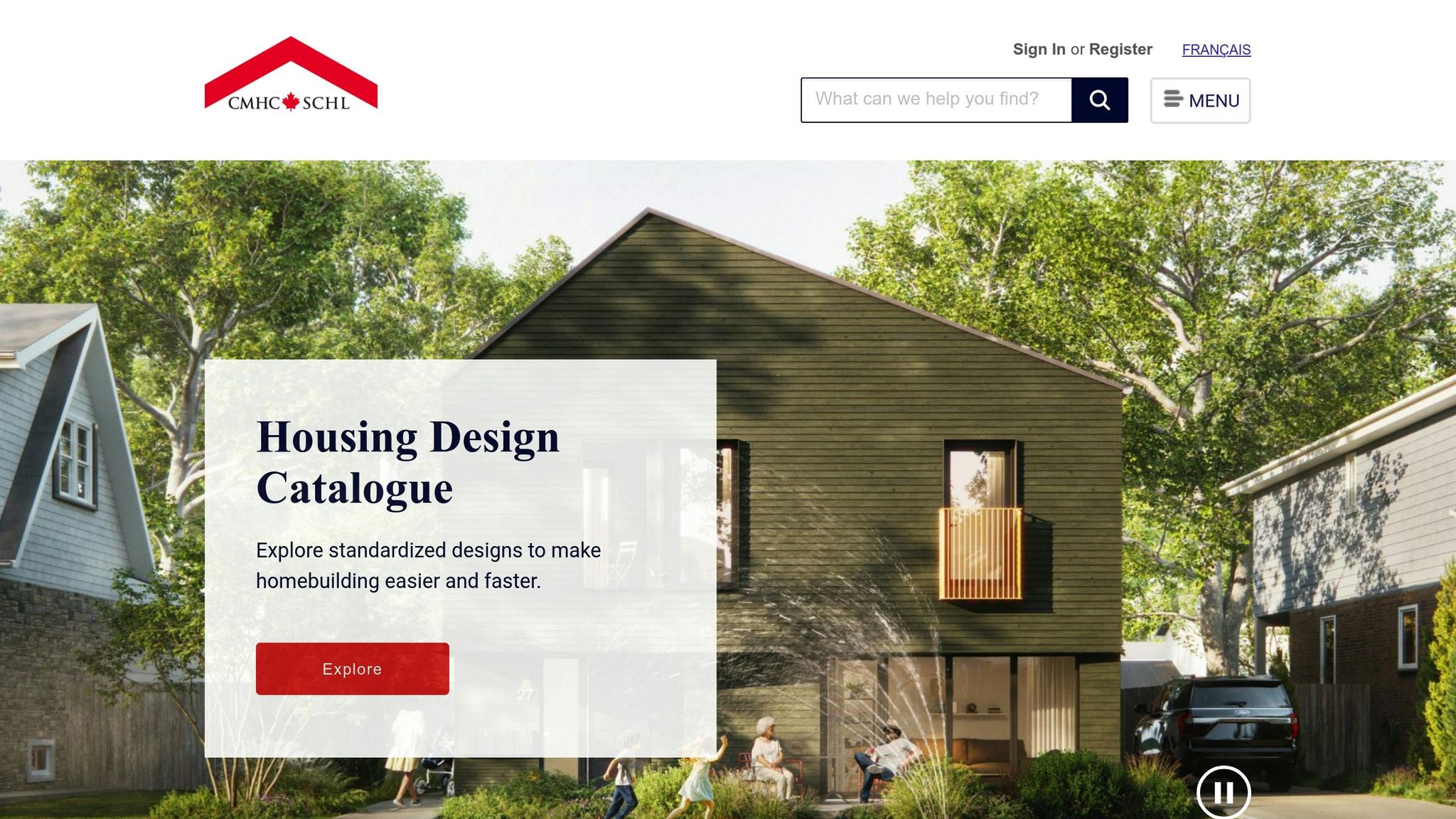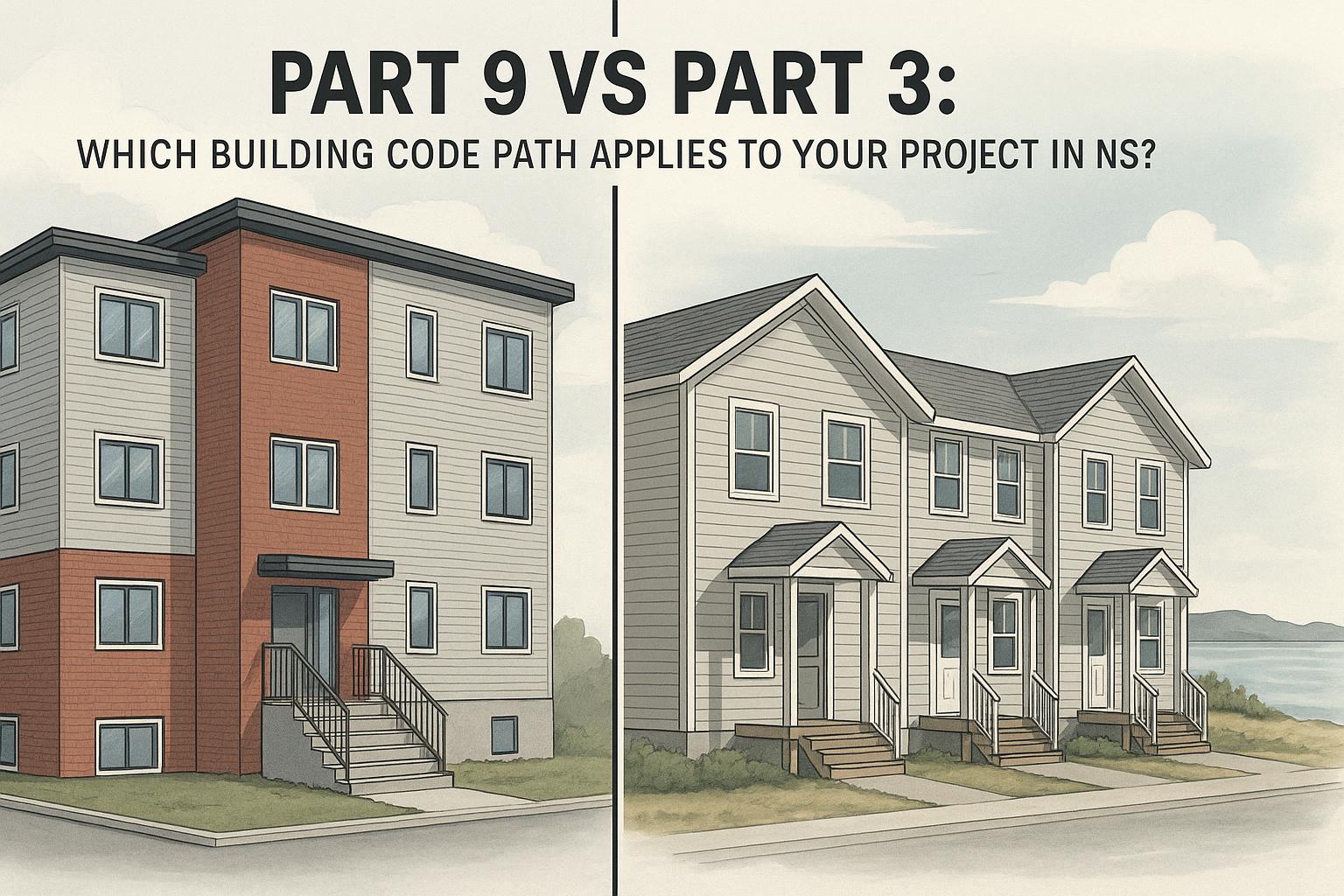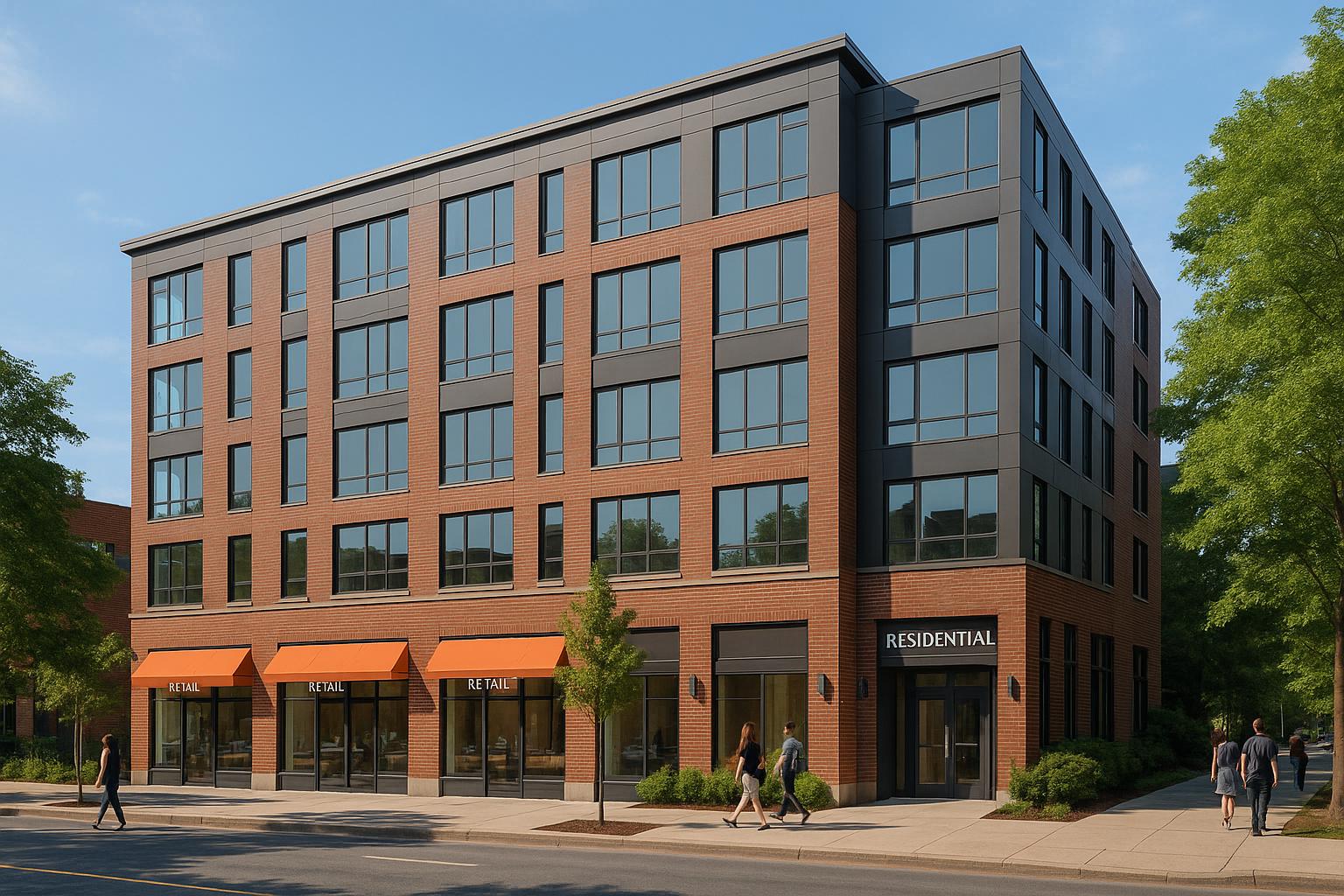Building multi-unit rental properties in Nova Scotia can be expensive, but there are several government programs to help reduce costs. These include:
- CMHC MLI Select Program: Offers up to 95% financing, 50-year amortization, and reduced premiums for projects meeting affordability, energy efficiency, and accessibility criteria.
- HST New Residential Rental Property Rebate: Refunds up to 36% of HST on construction costs for eligible rental units, with limits based on unit value.
- Municipal Property Tax Incentives: Provides tax reductions or exemptions for new rental developments, varying by municipality.
These programs can significantly lower upfront costs and improve long-term returns. However, navigating their application processes can be complex, especially with fragmented construction methods. Using an integrated design-build approach can simplify compliance, streamline documentation, and help you maximize savings.
How to Claim Your HST New Condo/House Rebate Online Tutorial (Updated Fall 2023)
CMHC MLI Select Program

The CMHC MLI Select program is designed to provide long-term mortgage insurance for multi-unit rental properties in Nova Scotia. With features like loan-to-value ratios of up to 95%, extended amortization periods, and reduced debt service coverage requirements, it offers a financial solution tailored to support rental housing projects.
What makes MLI Select stand out is its point-based system. Projects earn points by meeting specific criteria for affordability, energy efficiency, and accessibility. A minimum of 50 points is required to qualify, and higher scores unlock additional benefits.
"The more committed you are to social and environmental outcomes, the better the incentives." – CMHC [1]
Introduced on March 7, 2022, as a replacement for the MLI Flex product, MLI Select also features reduced mortgage insurance premiums to encourage affordable, energy-efficient, and accessible housing.
Eligibility Requirements
To qualify for MLI Select, projects must meet criteria that go beyond standard construction requirements. The program supports a range of multi-unit rental properties, including traditional rentals, single-room occupancies, supportive housing, and retirement homes with at least 50 units [1].
There are specific property requirements as well. Non-residential space must account for no more than 30% of the gross floor area or the total lending value, keeping the focus on residential rental units [1]. Accessibility is another key factor - 100% of units must meet "visitable" standards as defined by CSA Standard B651:23, and all common areas must be barrier-free [1]. Projects that commit to maintaining affordable rents for 20 years or more earn an additional 30 points, significantly improving their financing terms [1].
For energy efficiency, projects striving for Level 3 must achieve a 40% improvement over building code standards and cut greenhouse gas emissions by the same margin. This often requires incorporating renewable energy systems, such as solar panels [5].
Once a project meets these eligibility standards, it can tap into a range of financial benefits.
Financial Benefits
MLI Select offers substantial financial advantages compared to traditional commercial mortgages. Key benefits include:
- High loan-to-value ratios: With up to 95% financing, projects may need as little as a 5% down payment, compared to the typical 20–25% required with standard loans [2].
- Extended amortization periods: Terms of up to 50 years reduce monthly payments and improve cash flow [2].
- Lower debt service coverage ratios: Requirements are around 1.1x, compared to the 1.25x (or more) demanded by many commercial lenders [2].
Additionally, as projects earn more points by meeting program goals, mortgage insurance premiums decrease, leading to long-term savings. For example, on an $800,000 property, a conventional mortgage might require a $160,000 down payment, whereas MLI Select could lower this to just $40,000.
The financial benefits make the program attractive, but a well-prepared application is essential to fully realize them.
Application Process
A successful MLI Select application hinges on thorough preparation and strategic planning. Once the application is submitted, approval typically takes 6 to 12 weeks [2]. However, including time for design and documentation, the full timeline often spans 4–6 months, or even 6–8 months for more complex projects [4]. Early engagement with professionals is crucial to avoid delays.
Working with architects, engineers, and energy consultants early in the process can help identify ways to maximize your point score while managing costs [3]. CMHC also offers pre-application consultations to clarify requirements and address potential challenges before submission [3]. It’s a good idea to start organizing documentation at least 12 weeks before your submission date, with an additional 30-day buffer for unexpected requests [4].
Incorporating strategic design elements - such as energy-efficient HVAC systems, wheelchair-accessible units, and renewable energy solutions like solar panels - can significantly boost your score and improve your financing terms [4]. Using an integrated design-build approach from the start can help streamline compliance and minimize costly setbacks.
HST New Residential Rental Property Rebate
The HST New Residential Rental Property Rebate offers a way to recover a portion of the HST paid during the construction of rental properties. In Nova Scotia, where the HST rate is 15%, this rebate can significantly reduce upfront costs for multi-unit rental developments.
Here’s how it works: if you build eligible rental units, meet the required criteria, and submit a claim, you can recover a percentage of the HST already paid. This rebate applies to both the federal and provincial portions of HST in Nova Scotia, making it a valuable tool for reducing the overall tax burden on your project.
Eligibility and Property Types
The rebate focuses on new residential rental properties, but not every project will qualify. To be eligible, the property must be a multi-unit residential building with at least four self-contained units. This makes it particularly relevant for those constructing small apartment buildings, townhouse complexes, or converting properties into long-term rental units.
Each unit must include its own private kitchen and bathroom. Properties like rooming houses or boarding houses, where tenants share common facilities, are excluded. Additionally, the property must be intended for long-term rental use, meaning short-term rentals or vacation accommodations like Airbnb are not eligible.
A key condition is the rental commitment: the units must serve as primary residences for tenants, not as commercial spaces or temporary housing. The Canada Revenue Agency (CRA) requires the property to function as genuine rental housing where people establish their homes.
Rebate Calculation
The amount you can claim depends on the fair market value of each unit and follows a tiered structure. For units valued at up to $350,000, you can recover 36% of the HST paid. For example, if you paid $45,000 in HST on a $300,000 unit, you’d be eligible to claim back $16,200.
For units valued between $350,000 and $450,000, the rebate percentage gradually decreases. For instance, a $400,000 unit with $60,000 in HST would generate a reduced rebate of approximately $10,800.
Units valued above $450,000 do not qualify for the rebate at all. As a result, this incentive is best suited for mid-market rental developments rather than high-end luxury projects.
To illustrate, imagine a four-unit building in Halifax, with each unit valued at $320,000 (a total project value of $1,280,000). You would pay $192,000 in HST. Since each unit qualifies for the full 36% rebate, you could recover $69,120, significantly lowering your project’s overall costs.
The rebate applies to HST paid on construction-related expenses like materials, labour, and professional services. However, it does not cover costs such as land purchases, existing building acquisitions, or financing expenses.
Claiming the Rebate
You have up to two years from the date a unit is first rented to file your rebate claim, though many property owners choose to apply sooner. To claim, complete CRA Form GST524 and include necessary documentation such as invoices showing HST, lease agreements, and evidence of property valuation.
Careful record-keeping is essential. Ensure all invoices, receipts, and professional service bills clearly outline the HST paid. Missing or incomplete records can jeopardize your claim.
Timing your application can also help with cash flow. You don’t need to wait until all units are rented to apply. For example, if two units are rented in September and the other two in December, you could file for the rebate on the first two units in October, allowing you to receive part of your refund earlier.
The CRA typically processes rebate applications within 8 to 12 weeks. However, more complex claims or those requiring additional documentation may take longer. Filing electronically through the CRA’s online portal can speed up the process compared to submitting a paper application.
Municipal Property Tax Incentives
Municipal property tax incentives in Nova Scotia offer additional cost savings for new multi-unit rental properties. These programs operate independently from federal and provincial initiatives, giving property developers the opportunity to combine benefits and maximize savings.
Since these incentives are tailored to address specific local development and housing needs, the details can differ between municipalities. For example, some municipalities may provide temporary exemptions on the increased tax assessment tied to new construction, while others might offer reduced tax rates or deferrals for a set period. These measures can alleviate the ongoing tax burden associated with property improvements, making it easier to manage cash flow over time. This municipal layer of support complements the broader financial benefits already discussed.
Available Incentives by Region
In Halifax and nearby areas, municipal tax incentives are aimed at encouraging the development of new multi-unit rental properties. While the specifics of these programs vary, they often include tax exemptions or reductions based on the added value of construction. For detailed information, it’s best to contact local municipal offices directly.
Eligibility and Application
To qualify for municipal property tax incentives, pre-approval is typically required during the planning or pre-construction stage. Applicants are usually asked to submit detailed construction plans, financial documents, and proof that the property will be used for rental housing.
Maintaining eligibility often involves ongoing compliance. This may include periodic reporting to demonstrate that the property continues to meet the program’s criteria throughout the incentive period. Since application processes and timelines can differ between municipalities, it’s a good idea to connect with local planning departments early in the process. Many municipalities also offer pre-application consultations, which can help ensure all requirements are met and streamline the approval process.
sbb-itb-16b8a48
Using an Integrated Approach for Maximum Savings
When constructing multi-unit rental properties in Nova Scotia, the method you choose can significantly impact your ability to qualify for and maintain eligibility for tax breaks and rebates. Traditional construction methods, where tasks are divided among multiple contractors, often lead to coordination issues, unexpected costs, and incomplete documentation - making it harder to meet the requirements for various incentive programs. On the other hand, an integrated design-build approach simplifies the entire process, offering a more efficient and reliable solution. Here's a closer look at how the integrated approach stacks up against fragmented construction.
Integrated vs Fragmented Construction
| Aspect | Fragmented Construction | Integrated Construction |
|---|---|---|
| Coordination | Requires managing 6+ separate contractors independently | A single team with unified accountability |
| Budget Certainty | Cost overruns averaging 30–60% | Fixed-price construction with no overruns |
| Timeline Management | Project durations range from 8 to 18+ months | Guaranteed 6-month completion with penalties for delays |
| Rebate Compliance | Documentation gaps due to multiple parties | Consistent documentation with one point of responsibility |
| Quality Assurance | Varies across trades | Triple quality checks, including P.Eng inspections |
Fragmented construction often requires hiring separate architects, engineers, contractors, and tradespeople, which can lead to delays, inflated costs, and incomplete paperwork - complicating rebate applications.
Helio Urban Development takes a different approach by combining planners, architects, engineers, and construction teams under one roof. This integrated model eliminates coordination headaches, delivering projects at a cost of CA$160,000 per unit with a guaranteed six-month completion time - much faster than the typical 12–18 months in the industry.
Reducing Administrative Burdens
Integrated construction teams also shine when it comes to simplifying administrative tasks. Programs like CMHC MLI Select, HST rebates, and municipal incentives often come with complex requirements, and managing separate contractors can make this process overwhelming. An integrated team ensures consistent documentation from the planning phase through project completion, making it easier to meet these requirements.
For example, Helio’s CMHC MLI Select construction package is designed to meet enhanced energy efficiency standards right from the start. With properties built to be 40% more energy-efficient than the building code requires, owners can qualify for up to 95% financing with just a 5% down payment - all at a fixed cost of CA$160,000 per unit.
Daily updates and real-time project tracking further reduce administrative stress. With photo updates and access to a live project portal, you can monitor progress closely, ensuring accurate and timely preparation of rebate applications.
Fixed-price construction is another key advantage of the integrated approach. By locking in costs before breaking ground, you can accurately calculate rebate amounts and plan your finances with confidence. In contrast, traditional cost-plus methods often result in unpredictable final costs, creating cash flow challenges.
Local expertise also plays a critical role. An integrated builder familiar with municipal incentive programs can navigate the varying application processes and compliance requirements across Nova Scotia, from Antigonish to Bridgewater. This ensures that you maximize the benefits of local incentives while staying on track with your project goals.
Documentation and Application Checklist
If you're planning to claim rebates for your multi-unit rental property, getting your paperwork right is non-negotiable. From the early planning stages to project completion, every document matters. Missing or incomplete forms can lead to delays or even outright rejection. To make sure you secure the rebates and incentives mentioned earlier, attention to detail is key.
Required Documentation
For the GST/HST New Residential Rental Property Rebate, you'll need:
- Form GST524: This form is available as a fillable or standard PDF on Canada.ca [6][7]. You can submit it online through My Business Account, Represent a Client, or My Account [6][8].
- Provincial rebate schedule for Nova Scotia: If your property is in Nova Scotia, you may qualify for a 100% rebate on the provincial portion of the HST for purpose-built rental housing, provided you meet federal conditions [7].
- Supporting documents such as construction contracts, invoices from trades, and occupancy permits to confirm your eligibility [7].
For municipal property tax incentives, the required documents will vary depending on your location. It's best to contact your local municipal office to confirm what you'll need. This could include proof of property ownership, building permits, and certificates confirming construction completion.
Once you've gathered the necessary documents, follow these tips to ensure a smooth application process.
Compliance Tips
- Start early: Begin collecting documents and tracking costs during the planning phase to avoid any gaps that could jeopardize your application.
- Keep everything: Save invoices, change orders, inspection reports, and progress photos. Time-stamped records can help verify compliance and construction timelines.
- Work with experts: Engage professionals who understand the rebate process. Architects can help ensure your plans meet required standards, while accountants can track eligible expenses separately.
- Submit when ready: Only send in your application after confirming that you've met all eligibility criteria.
- Back up your records: Keep both digital and physical copies of all documents. You may need to provide additional evidence later.
- Check local requirements: Municipal documentation needs can vary widely. Contact your municipal office early to get the latest information on available incentives and their specific requirements.
- Plan inspections: Some rebate programs require inspections during construction, while others may need final occupancy permits. Make sure to schedule these as required.
Conclusion
Tax incentives like the HST rebate and CMHC MLI Select program can significantly reduce upfront costs for multi-unit rental properties in Nova Scotia. The HST New Residential Rental Property Rebate offers substantial savings on construction expenses, while the CMHC MLI Select program provides up to 95% financing with extended 50-year amortization periods - both designed to ease the financial burden for property developers.
Preparation is key to maximizing these benefits. Start gathering documentation early in the planning phase to meet deadlines and eligibility requirements. Keep detailed records, including invoices, permits, and inspection reports, as they play a crucial role in successfully claiming rebates.
An integrated design-build approach can further simplify the process. By working with a cohesive team from the beginning, you can avoid miscommunication, misplaced paperwork, and administrative delays. This approach ensures rebate documentation stays organized and complete throughout the project.
These incentives don’t just offer short-term savings - they also contribute to long-term property performance. Properties built to CMHC MLI Select standards benefit from better financing terms while supporting competitive rental rates through energy-efficient construction. The combination of reduced construction costs and ongoing operational advantages creates a strong financial foundation for property owners who plan carefully.
Ultimately, these programs are designed to encourage the development of rental housing in Nova Scotia. Taking full advantage of them isn’t just good business - it aligns with the very purpose of these incentives. By treating rebate planning as a critical part of your overall project strategy, you can capture every available benefit while delivering quality rental properties that contribute to the community.
FAQs
What are the advantages of using the CMHC MLI Select program to finance multi-unit rental properties in Nova Scotia?
The CMHC MLI Select program provides notable benefits for financing multi-unit rental properties in Nova Scotia. One standout feature is the potential for lower down payment requirements, with some projects qualifying for as little as 5%. This makes it an attractive option for developers aiming to manage upfront costs.
The program also places an emphasis on affordable and accessible housing features, encouraging developments that cater to community needs. This approach not only supports inclusive housing but also aligns with broader efforts to address housing challenges.
By taking advantage of this program, property owners can minimize initial expenses while securing favourable terms, making their rental projects more financially achievable.
How does an integrated design-build approach simplify accessing tax breaks and rebates for building rental properties in Nova Scotia?
An integrated design-build approach makes it easier to tap into tax breaks and rebates by promoting early collaboration among everyone involved in your project. This forward-thinking strategy ensures that eligible programs - like the CMHC MLI Select, HST rebates, or municipal tax exemptions - are identified early on, with all necessary paperwork prepared efficiently.
By centralizing accountability, this method reduces the risk of miscommunication and simplifies dealing with government programs. Tackling eligibility requirements and application steps right from the start helps avoid delays, increases savings, and lets you focus on bringing your rental property project to life with peace of mind.
Who qualifies for the HST New Residential Rental Property Rebate, and how can it help reduce construction costs?
To be eligible for the HST New Residential Rental Property Rebate, the property must meet a few key criteria. It needs to be newly built, designated for long-term residential rental use (leased for at least one year), and have a fair market value under $450,000 at the time the HST becomes payable.
This rebate offers a practical way to offset some of the HST costs tied to construction. By reclaiming part of the tax, property owners can reduce their upfront expenses, making it easier to manage budgets and potentially boost their overall return on investment.



